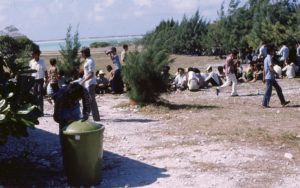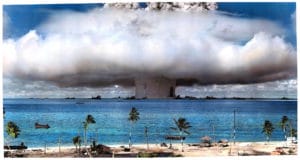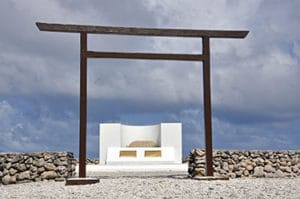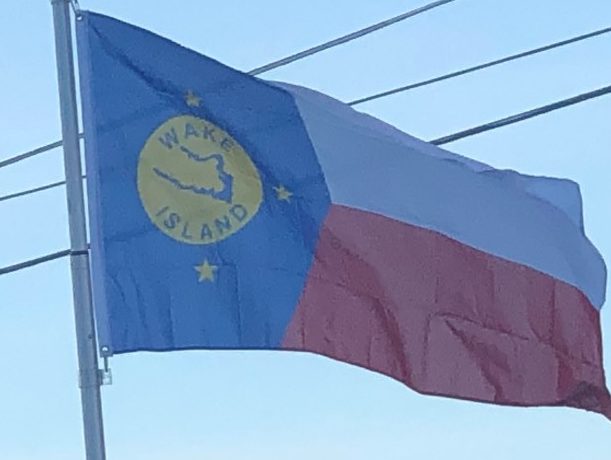
A 60-man civil engineering team was brought in to reopen boarded-up buildings and housing, two complete MASH units arrived to set up field hospitals and three Army field kitchens were deployed. A 60-man United States Air Force Security Police team, processing agents from the U.S. Immigration and Naturalization Service and various other administrative and support personnel were also on Wake. Potable water, food, medical supplies, clothing and other supplies were shipped in. On April 26, 1975, the first C-141 military transport aircraft carrying refugees arrived. The airlift to Wake continued at a rate of one C-141 every hour and 45 minutes, each aircraft with 283 refugees on board. At the peak of the mission, 8,700 Vietnamese refugees were on Wake. When the airlift ended on August 2, a total of about 15,000 refugees had been processed through Wake Island as part of Operation New Life.
Bikini Islanders Resettlement:
On March 20, 1978, Undersecretary James A. Joseph of the U.S. Department of the Interior reported that radiation levels from Operation Crossroads and other atomic tests conducted in the 1940s and 1950s on Bikini Atoll were still too high and those island natives that returned to Bikini would once again have to be relocated. In September 1979 a delegation from the Bikini/Kili Council came to Wake Island to assess the island’s potential as a possible resettlement site.

The delegation also traveled to Hawaii (Molokai and Hilo), Palmyra Atoll and various atolls in the Marshall Islands including Mili, Knox, Jaluit, Ailinglaplap, Erikub and Likiep but the group agreed that they were only interested in resettlement on Wake Island due to the presence of the U.S. military and the island’s proximity to Bikini Atoll. Unfortunately for the Bikini Islanders, the U.S. Department of Defense responded that “any such resettlement is out of the question.”
Commemorative and Memorial Visits:
In June 1979, the original Wake Island fighter aircraft unit now nicknamed the “Wake Island Avengers”, the United States Marine Corps attack squadron VMA-211, landed their A-4 fighter jets at Wake. The squadron was en route from Japan to the U.S. mainland.
From April 20 to 23, 1981, a party of 19 Japanese, including 16 former Japanese soldiers who were at Wake during World War II, visited the island to pay respects for their war dead at the Japanese Shinto Shrine.

In the early 1980s, the National Park Service conducted an evaluation of Wake Island to determine if the World War II (WWII) cultural resources remaining on Wake, Wilkes and Peale were of national historical significance. As a result of this survey, Wake Island was designated as a National Historic Landmark (NHL) on September 16, 1985, helping to preserve sites and artifacts on the atoll associated with WWII in the Pacific and the transpacific aviation era prior to the war. As a National Historic Landmark, Wake Island was also included in the National Register of Historic Places.
